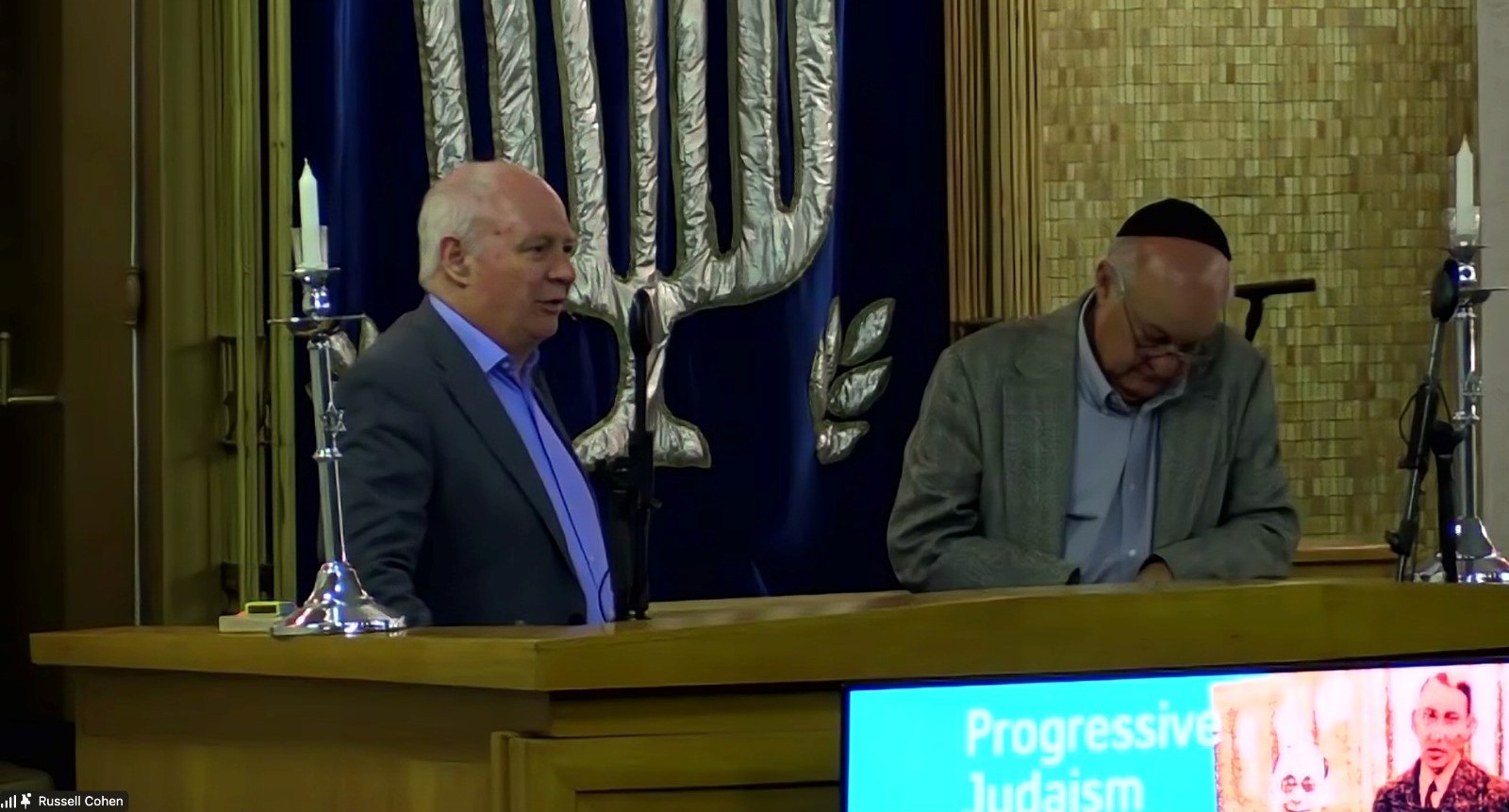click to dowload our latest edition
CLICK HERE TO SUBSCRIBE TO OUR NEWSLETTER


Published
8 months agoon
By
Steven GruzdWith his arrival in 1933, the charisma, chutzpah, and public speaking prowess of Rabbi Moses Cyrus Weiler launched Progressive Judaism in South Africa. Some of the practices he instituted were straight from American Reform Judaism; others he made up himself. This larger-than-life rookie rabbi left his mark on the movement he helped to propel, illustrated in an irreverent historical talk by writer and historian Irwin Manoim, the author of Mavericks Inside the Tent: The Progressive Jewish Movement in South Africa and Its Impact on the Wider Community.
Manoim was speaking at the celebration of 90 years of Progressive Judaism in South Africa, marked from Weiler’s arrival, held at Beit Emanuel in Parktown on 30 August.
He recounted how the 26-year-old Weiler landed in Cape Town from America on 6 August 1933. In the pouring rain, no-one was there to meet him at the docks. He took the first train to Johannesburg, where 17 people met him, but 14 disappeared when a newspaper photographer took his picture. The Orthodox establishment had been extremely hostile to the arrival of Progressive Judaism in South Africa, fearing this “apostasy” that had “already poisoned American Jewry” would attract their congregants and the unaffiliated, Manoim said. At the time, of the 30 000 estimated Jews in Johannesburg, only 2 000 were members of Orthodox shuls. “Rabbi Weiler became the most hated Jew in South Africa,” Manoim said.
Weiler was clean-shaven, hatless and inexperienced – and therefore cheap – his starting salary was £40 a month. Born in Riga, Latvia, in 1907, he was descended from a long line of Orthodox rabbis. His father took the family to live in Israel, and started a chocolate factory there. Weiler spoke English, German, Hebrew, and Yiddish. A brilliant student, Weiler won a scholarship to study in the United States, where he was attracted to Progressive Judaism and then ordained as a Reform rabbi.
When Weiler gave his first speech in Johannesburg, the room was bursting at the seams with the curious and several hecklers. He soon became a sought-after speaker around the country. “His charisma built the movement,” Manoim said, with people joining his congregation to hear his masterful oratory.
Weiler’s Shabbat evening services started at 20:15 to encourage women to attend after dinner. Strict decorum and silence were demanded, and latecomers were locked out. Men and women sat together, and both had to cover their heads – whereas the yarmulke was becoming obsolete in many American Reform shuls. Lay leaders led the service, and Weiler’s sermon subject was pre-announced in the newspapers. A mixed choir was accompanied by an organ, violins, and cellos. At the end of the service, Hatikvah was sung along with G-d Save the King.
Not everything worked. Weiler’s efforts to make membership free went awry, and he had to abandon his idea of abolishing the Barmitzvah in favour of a “confirmation ceremony” for 16-year-olds. His congregation, for one thing, thought the name was too Christian. He conducted the first Batmitzvah in South Africa in 1937.
He wanted to build a magnificent Temple to thumb his nose at his Orthodox rivals, Manoim recounted. He enlisted well-known architect Hermann Kallenbach, but grandiose plans for lavish gardens and a massive building in Parktown had to be scaled down in the Recession. Objections arose from Christian residents, foreshadowing the antisemitism of the 1930s and 1940s. His spectacular Temple was never built; a smaller but beautiful shul, Temple Israel, opened in Hillbrow in September 1937. It still operates today, in spite of the changed demographics of the area.
Weiler launched 24 more Progressive communities across southern Africa. The Orthodox head of the Beth Din, Rabbi Isaac Kossovsky, set out to marginalise and ostracise the Progressive movement, branding it inauthentic and an existential threat to Judaism. He was largely successful, Manoim noted, with no recognition of Reform rabbis, conversions, weddings, and separate burial areas in cemeteries.
Weiler’s wedding to Una Galman from Bulawayo was held in great secrecy. Manoim speculated that Chief Rabbi Julius Landau, who got on famously with Weiler, might have married them, necessitating the clandestine measures.
“Una was the model anti-rebbetzin,” Manoim said. “She was never at his side, and appears in only one photograph next to him.” She was more interested in riding her Vespa motorbike than in anything Weiler was doing. She was a passionate educator though, running one of South Africa’s first Montessori schools. In 1944, with the help of women of the Temple Sisterhood, she started what became the MC Weiler Primary School in Alexandra township in Johannesburg. Today it has 800 pupils, and it survived multiple attempts by the apartheid government to shut it down.
In 1956, Weiler stunned the community by announcing he was making aliya. He gave a year’s notice, but it took four years to find a replacement, during which time the Progressive movement lost impetus and started a slow decline, according to Manoim. “The movement was built around the personality of one man.” Nevertheless, Progressive Judaism in South Africa grew and endured, practicing gender equality; holding most of the services in Hebrew, minus the organs; and embracing non-racialism long before the Orthodox.
Weiler tragically lost two sons in action defending Israel in their early twenties. He died in 2000.
Manoim’s talk coincided with the opening of the exhibition titled “Groundbreakers: Progressive Judaism in South Africa,” which has moved to Beit Emanuel in Johannesburg from the South African Jewish Museum in Cape Town.
